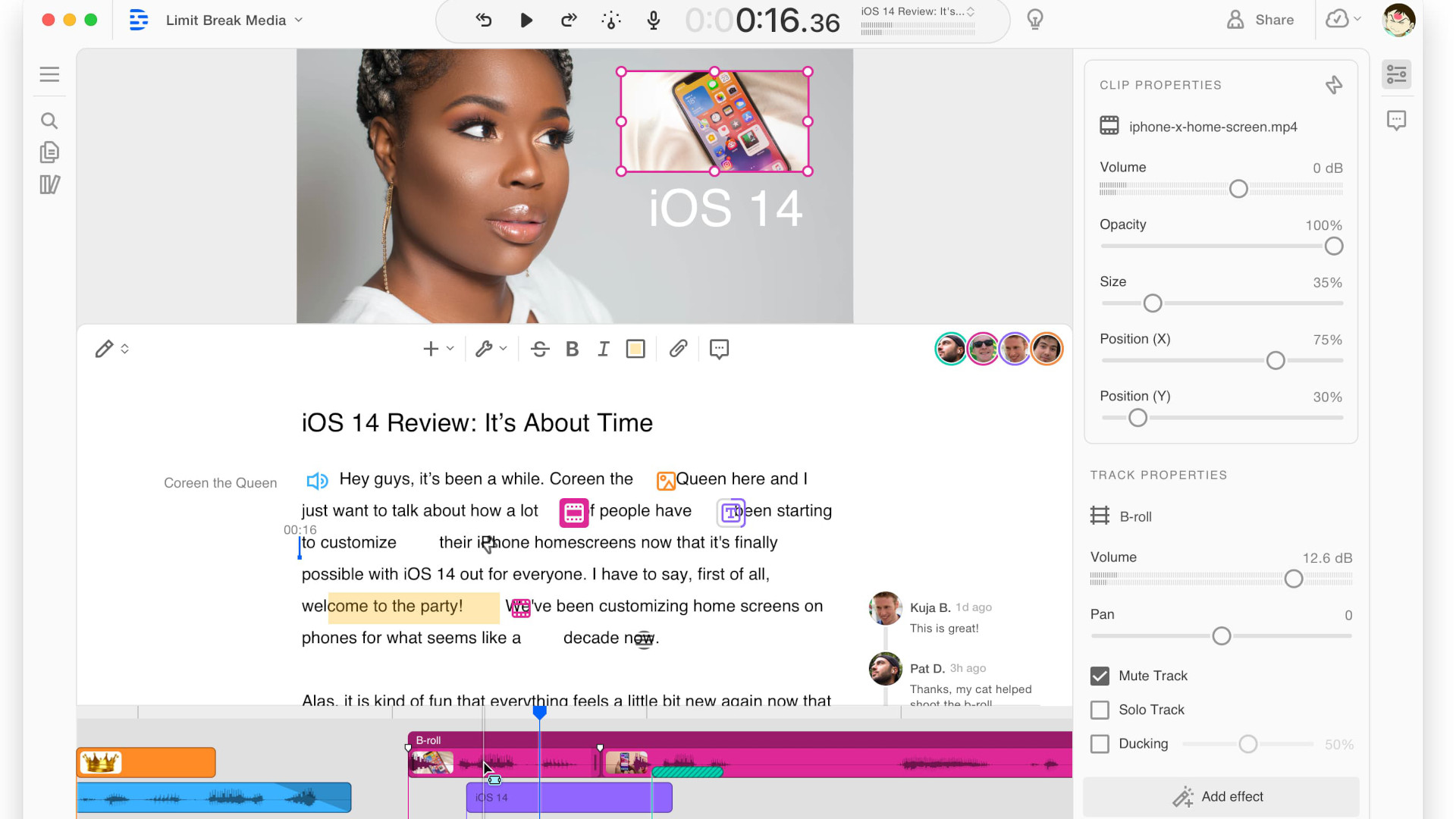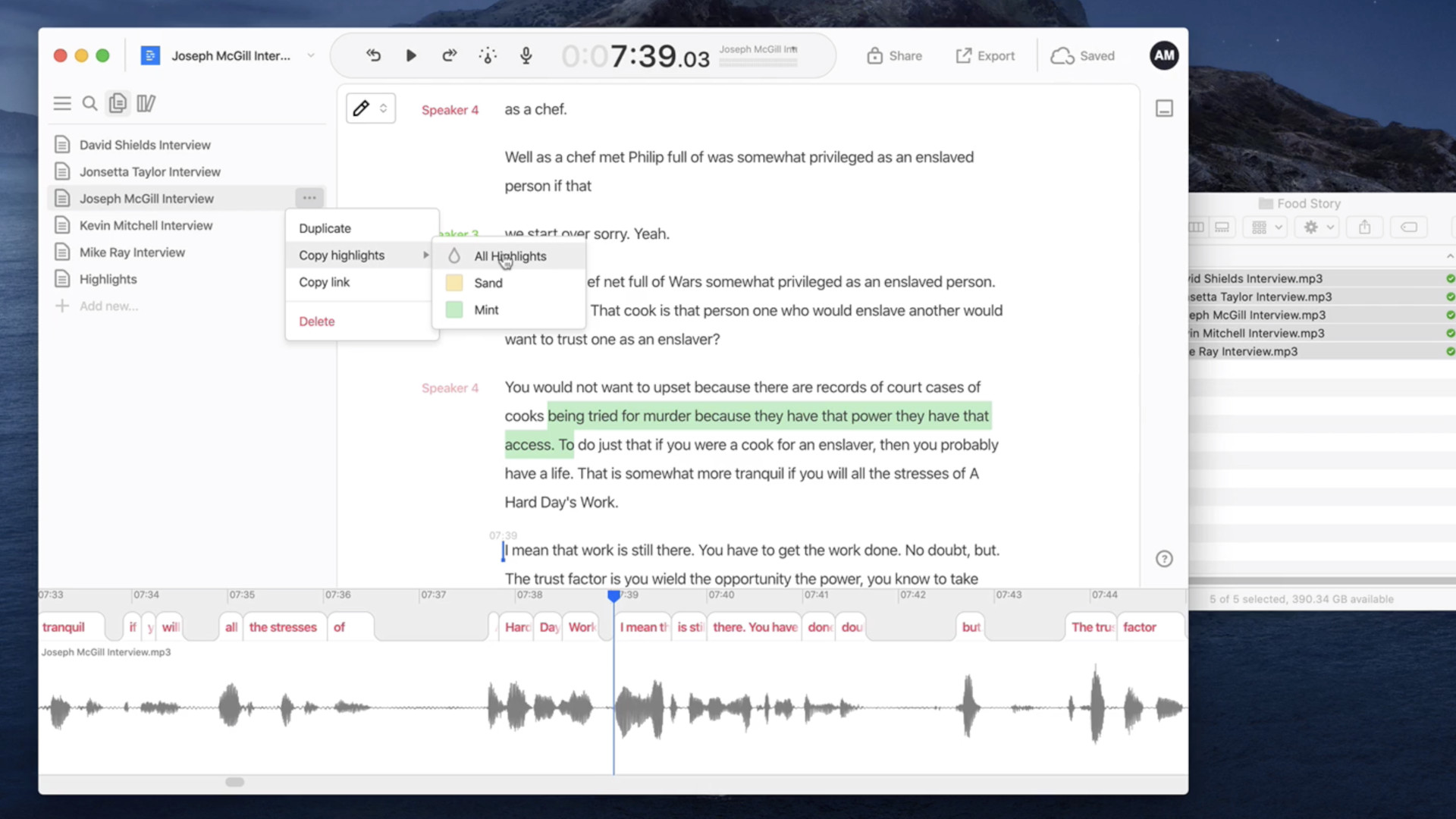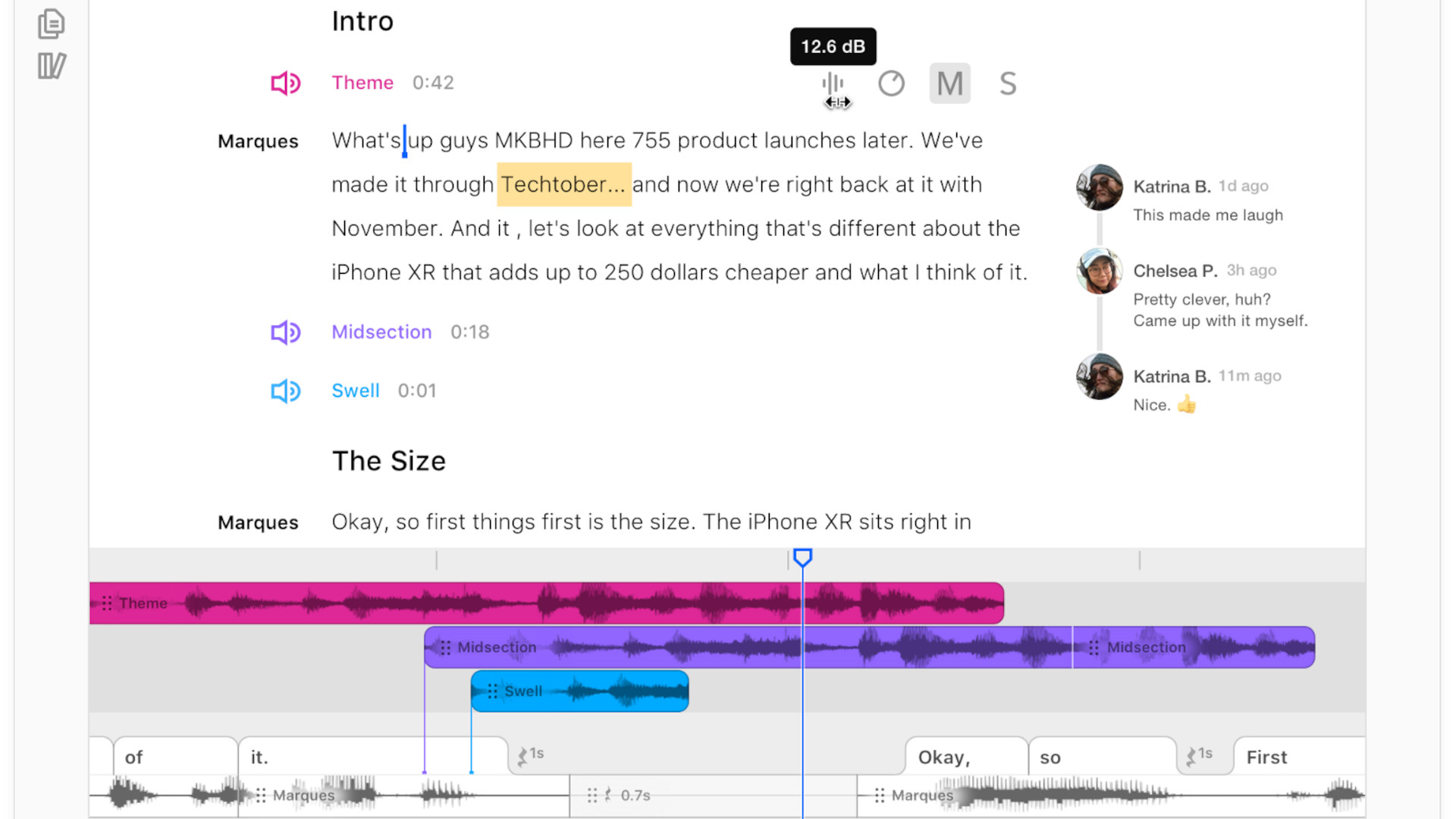What is Descript and How Can it Be Used to Teach? Tips & Tricks
Descript allows video and audio editing, all in one place, making it ideal for students

Descript is a do-it-all video and audio editor that wants to make the whole process as easy as possible. As such, it's a useful place for students and educators to begin, or to use ongoing as a helpful tool to create.
Crucially, this platform also offers quick tutorials that allow even novice users to get the hang of how it works. That does make it suitable for students, and also helps to make it accessible for educators as part of their teaching toolkit.
Descript, as the name alludes, also offers automatic transcription of audio. This can be very helpful if creating audio recordings or podcasts that are going out to those who may not be able to hear and could benefit from reading the transcript.
The features of this tool go far deeper, with a special skill when it comes to group podcasting and screen recording, so read on to see if Descript could be for you.
What is Descript?
Descript is an audio and video production and editing platform that specializes in podcast creation, specifically for groups.

Descript crams in a host of helpful features, including screen recording, audio recording, multitrack editing and mixing, publishing, and even some AI tools for text-to-speech creation.
Coming in both web-based and desktop versions, this is easy to access across a host of devices. It also offers several tiers of pricing so it can be used for free but also with more complexity for a premium.
Tools and ideas to transform education. Sign up below.
The screen recording feature, which records from the screen as well as webcams, is a particularly useful tool for teachers looking to create guidance resources for students. The ability to partially add automated speech from text, in your own voice, is a really powerful way to stay personal and engaging while saving time on recording audio perfectly.
How does Descript work?
Descript requires you to sign-up before downloading the software to get started. You are then also required to complete a short survey on how you will be using the tool, before moving forward. It's a pretty swift process and is, initially at least, free.

Once up and running you are able to record audio, for podcasts specifically, as an individual or as part of a group. The ability to collaborate, remotely, is a really powerful feature that students working on a project across locations outside of school hours could find very useful.
Students can easily record audio or screen record right away. It is then possible to layer the audio and video to edit in a timeline style that is very professional yet straightforward to use. As mentioned, there are some helpful guidance tutorials to make sure even less confident users can get going with relative ease.
It is then possible to output to various formats for sharing as needed. You can also use the tool to publish, making it helpful for those looking to share to social media directly, for example, or for anyone publishing a regular podcast.
What are the best Descript features?
Descript is easy to use, offering deep and intuitive levels of control without getting too complicated in the process.
One of the best features has to be the transcription, which is done via AI. You can record an audio recording and the written transcription is automatically available -- ideal if students are watching in public and want to follow along without audio playing, or if they are unable to hear.

Another smart feature is the premium overdub voice cloning. This allows you to offer quality voice over corrections to podcasts or audio recordings simply by typing the correction. A very clever way to edit without spending lots of time re-recording. Although for this to work you must read a 10-minute script out, just once, so the system can learn and clone your voice.
You can also easily remove noises and enhance audio with a single click. This makes for near professional level audio quality with just a laptop mic. A great way to cut out any "ums" or "ers" from a recording to give it a more polished finish.
Live collaboration is helpful for students working on a project together, however, it's worth noting this data is stored in the cloud so any recordings are exposed as far as the protection of the platform offers with its own server security.
A helpful option to add in-line notes to audio recordings and videos is available -- ideal when offering feedback on a collaborative project or for educators giving students direct responses.
How much does Descript cost?
Descript offers several tiers of pricing, which can be paid for either monthly or annually which are: free, creator, pro and enterprise.
The free plan gets you one transcription per month in 23 languages, detection of 8+ speakers, one watermark-free export, 720p resolution, dynamic captions, unlimited projects, animation and transitions, filler word removal of "um and "uh," overdub voice to 1,000 word limit, studio sound to a 10-minute fill limit, background sound removal to 10-minute limit, stock media library of first five search results, stock template library, collaboration and commenting, plus 5GB of cloud storage.
Go for the Creator plan, at $12/month, and you get all the above plus 10 hours of transcription per month, unlimited exports, 4K resolution, one hour of studio sound, one hour of AI background removal, first 12 search results of the stock media library, creation and sharing of templates, plus 100GB of cloud storage.
Up that to the Pro level, at $24/month, and you get the above plus 30 hours of transcription per month, unlimited studio sound and AI background removal, removal of 18 filler and repeated words, unlimited overdub and stock media library access, custom drive and page branding, plus 300GB of cloud storage.
A custom plan with bespoke pricing is available, which gets you all the Pro features plus a dedicated account representative, single sign on, overdub enterprise, Descript service agreement, security review, invoicing, onboarding, and training.
Descript best tips and tricks
Group cast
Set a podcast creation project in groups so that students can learn to work collaboratively, outside of class hours.
Publish
Show the class how publishing works so they have the ability to create and share their own podcasts in their own time.
Overdub your own
Educators can use overdub to help create audio to go with guidance videos without actually spending lots of time audio recording everything perfectly.
Luke Edwards is a freelance writer and editor with more than two decades of experience covering tech, science, and health. He writes for many publications covering health tech, software and apps, digital teaching tools, VPNs, TV, audio, smart home, antivirus, broadband, smartphones, cars and much more.
